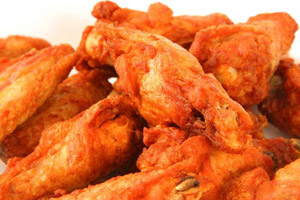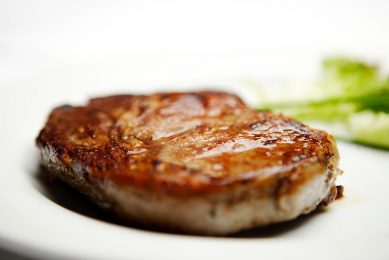1.2 billion chicken wings eaten during US super bowl

Chicken wings have become a staple food of Super Bowl parties in the US, and demand for them on menus is now at an all-time high leading up to the second biggest eating day of the year – Super Bowl Sunday.
According to the National Chicken Council’s 2013 Wing Report, more than 1.23 billion wing portions will be consumed during Super Bowl weekend in 2013, although wing consumption is down about one percent, or 12.3 million wings, compared to last year’s numbers, but not because demand for them is declining. Quite the opposite, explains Bill Roenigk, chief economist and market analyst at the Washington, DC-based National Chicken Council.
“Chicken companies produced about one percent fewer birds last year, due in large part to record high corn and feed prices,” Roenigk said. “Corn makes up more than two-thirds of chicken feed and corn prices hit an all-time high in 2012, due to two reasons: last summer’s drought and pressure from a federal government requirement that mandates 40% of our corn crop be turned into fuel in the form of ethanol. Simply put, less corn equals higher feed costs, which means fewer birds produced.”
The data shows that nearly four in five US adults (79%) eat chicken wings and that consumption does not vary significantly by region or gender. Women (77%) are just as likely as men (82%) to roll up their sleeves, break out the wet naps and eat a few wings.
“The data show that chicken wings are not bound by gender or geographic lines,” added the council’s Roenigk. “We also know that they are nonpartisan and politically independent. That is, there are really no extreme left wings or extreme right wings.”
The vast majority of wings, especially those destined for restaurants, are disjointed, with the third joint (the thin part known as the flapper) being exported to Asian countries and the meatier first and second joints being sold domestically. The wing is usually split into two parts – or portions or segments – known as the “drumette” and the mid-section or “flat” and sold to restaurants or retail grocery outlets.
A chicken has two wings, and chicken companies are not able to produce wings without the rest of the chicken. Therefore, the supply of wings is limited by the total number of chickens produced. When the demand for wings is stronger than the demand for other chicken parts, the price of wings will go up, as it has this past year.
The wholesale price of wings will be the most expensive ever during Super Bowl XLVII as demand rises and the supply has shrunk. Wings are also currently the highest priced part of the chicken. Wing prices always go up in the fourth quarter of the year as restaurants stock up for the Super Bowl and prices usually peak in January during the run-up to the big game. But many analysts expect that demand will hold steady even after the NFL season ends.













